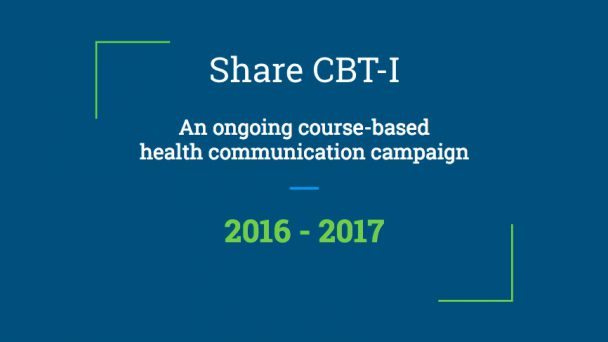We strive to make it easier for clinicians to find and refer CBT-I help for patients with adult chronic insomnia, using the Insomnia Hub - like a shared digital bridge. As well, on the Hub, we aim to improve dissemination of CBT-I research (and where to find services) to health consumers.
OnAir Post: Share CBT-I



